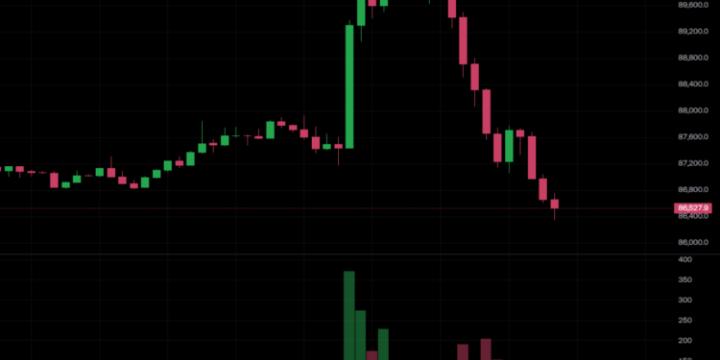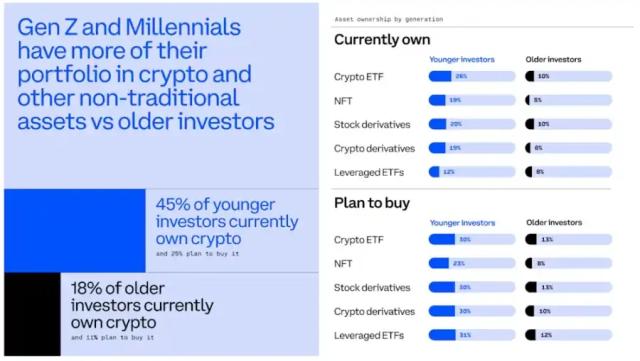Author: Biteye core contributor Viee
Editor: Crush, a core contributor of Biteye
Community: @BiteyeCN
When the price of Bitcoin rises, it will trigger the "love the house and love the dog" effect - investors will have a strong interest in various projects and applications in the Bitcoin ecosystem. It can be foreseen that this virtuous cycle of improved liquidity and rising Bitcoin prices will lay a solid foundation for the prosperity of the Bitcoin ecosystem.
Looking back at last year’s surge, the popularity of Ordinals and the wealth effect brought by inscriptions made the market begin to pay more attention to the Bitcoin ecosystem. As the market gradually recovers, this article will explore potential coin issuance projects in the Bitcoin ecosystem to help everyone seize new opportunities in the bull market.
0 1 Project Inventory

L2 Mainnet
1. Bitlayer: Total financing of US$16 million, invested by Framework Ventures, OKX Ventures, etc.
It is the first Bitcoin-security-equivalent Layer2 network based on BitVM. It is committed to becoming the computing layer of Bitcoin, introducing ultra-scalability and inheriting Bitcoin's L1 security, providing users with high-throughput and low-cost transaction experience.
2. BOB (Build on Bitcoin): total financing of US$11.6 million, invested by Castle Island, Bankless Ventures, etc.
A hybrid Layer2 that combines the security of Bitcoin and the flexibility of Ethereum smart contracts, supporting Bitcoin ecosystems such as Ordinals, Lightning, and Nostr.
3. B² Network: Total financing was not disclosed, invested by HashKey Capital, OKX Ventures, etc.
Bitcoin Layer 2 solution based on zero-knowledge proof aims to increase transaction speed and expand application diversity while ensuring security and supporting Turing-complete smart contracts.
4. BEVM: Total financing was not disclosed, invested by Skyland Ventures, Waterdrip Capital and others.
A fully decentralized Bitcoin Layer 2 solution, compatible with the Ethereum Virtual Machine (EVM), designed to expand Bitcoin's smart contract capabilities and use native Bitcoin (BTC) as fuel fees.
5. Rollux: Total financing was not disclosed, invested by Dewhales Capital and others.
An EVM-compatible Optimistic Rollup platform based on Bitcoin, designed to improve Bitcoin's scalability and smart contract functionality, and provide developers with a secure, low-cost decentralized application environment.
L2 Testnet
1. Babylon: Total financing of US$96 million, invested by Paradigm, Polychain, Binance Labs, etc.
The protocol is a Bitcoin staking protocol that allows users to lock Bitcoin in the Bitcoin network to provide security for other POS chains while obtaining staking returns.
2. Mezo: Total financing of US$28.5 million, invested by Pantera Capital, Ledger Cathay Capital, etc.
An EVM-compatible Bitcoin economic layer that aims to advance the circular Bitcoin economy beyond a mere “savings technology” by providing applications that facilitate the use of Bitcoin tokens.
3. Botanix: Total financing of US$11.5 million, invested by Polychain, ABCDE Capital, etc.
The decentralized Turing-complete L2 EVM built on Bitcoin consists of two core components: the Ethereum Virtual Machine (EVM) and Spiderchain, combining the security of Bitcoin with the ease of use of EVM.
4. Nubit: Total financing of US$11 million, invested by Polychain, OKX Ventures, etc.
The first Bitcoin DA layer is designed to effectively expand Bitcoin's data capacity and provide support for applications such as Ordinals, Layer 2 solutions, oracles, etc., thereby increasing the scope and efficiency of the Bitcoin ecosystem.
5. Arch Network: Total financing of US$7 million, invested by Multicoin Capital, OKX Ventures, etc.
Based on Bitcoin's Layer 2, it uses the Rust-based zero-knowledge virtual machine ArchVM, and combines it with a decentralized validator network to provide developers with an efficient and scalable application environment.
6. Bitfinity Network: Total financing of US$7 million, invested by Polychain, ParaFi Capital, etc.
An EVM-compatible Bitcoin Layer 2 network that uses the Solidity language and utilizes IC's unique architecture and Chain Key technology. It has storage capacity and processing speed comparable to traditional network services, without the need to pay gas fees.
7. Zulu Network: Total financing of US$3 million, invested by Waterdrip Capital, Cryptogram Venture, etc.
Based on Bitcoin's Layer 2, it uses a unique two-layer architecture to expand the functionality of the Bitcoin network. EVM compatibility is achieved through ZuluPrime (L2), while ZuluNexus (L3) acts as the third layer of Bitcoin, providing additional security guarantees.
8. Citrea: Total financing of US$2.7 million, invested by Galaxy, Delphi Digital, etc.
The first zero-knowledge proof-based Layer 2 in the Bitcoin ecosystem adopts a unique two-way pegging architecture, realizing the first universal trust-minimized Bitcoin Layer 2 solution in history, bringing more powerful programmability and application scenarios to Bitcoin.
9. Fractal Bitcoin: Total funding was not disclosed, and it was developed in collaboration between UniSat and Block Space Force.
A Layer 2 scaling solution based on the Bitcoin Core code that aims to increase Bitcoin’s transaction processing capacity and speed by recursively creating infinite layers while maintaining full compatibility with the Bitcoin main chain.
L2 Pre Testnet
1. Lorenzo Protocol: Total financing was not disclosed, invested by Binance Labs and others.
The decentralized liquidity staking platform based on Babylon aims to provide users with safe and convenient Bitcoin staking services. The protocol allows users to stake Bitcoin and obtain liquidity staking tokens through the liquidity financial layer.
2. QED Protocol: Total financing of US$9 million, invested by Blockchain Capital, Arrington Capital, etc.
Based on Bitcoin's zk native execution layer, it focuses on zero-knowledge proof verification technology. Through Taproot upgrades, it supports a wide range of applications such as decentralized exchanges and DeFi on Bitcoin, and promises to provide high-speed transactions and global state access.
3. GOAT Network: Total financing of US$5 million, invested by Metis Foundation and others.
The first Bitcoin Layer 2 solution to share ownership and mining rewards through a decentralized sorter, introducing unique OP technology to scale the Bitcoin network through Bitcoin Rollup.
4. Nexio: Total financing of US$2.2 million, invested by Lattice Capital, HTX Ventures, etc.
An innovative Bitcoin scaling solution that leverages parallelized Rollup technology and aims to support over 30,000 transactions per second while keeping transaction fees below $0.01.
DeFi Mainnet
SolvProtocol: Total financing of US$10 million, invested by Binance Labs, The Spartan Group, etc.
A full-chain basic income agreement that provides currency-based asset income-increasing services. Users can deposit BTC into Solv Protocol to obtain Solv BTC.
DeFi Testnet
1. BitSmiley: Total financing was not disclosed, invested by ABCDE Capital, OKX Ventures, etc.
A stablecoin lending protocol based on the Bitcoin ecosystem, combining an over-collateralized stablecoin protocol, a trustless loan protocol, and a derivatives protocol, filling the need for stablecoins and lending infrastructure in the Bitcoin ecosystem.
2. Chakra: Total financing was not disclosed, invested by ABCDE Capital, Bixin Ventures, etc.
A Bitcoin re-pledge protocol driven by zero-knowledge proofs, using ZK-STARKs technology and middleware chains to solve the trust problem with intermediaries. A partnership has been established with Nubit, a data availability layer, to enhance the Bitcoin ecosystem in a modular way.
DeFi Pre Testnet
Lombard: Total financing of US$16 million, invested by Polychain, OKX Ventures, etc.
A Bitcoin re-staking protocol that advances the Bitcoin staking ecosystem by allowing users to move yield-generating Bitcoin across chains without dispersing liquidity.
RGB+ Lightning Network Mainnet
BiHelix: Total financing was not disclosed, invested by Waterdrip Capital, LK Venture, UTXO, Satoshi Labs, etc.
A Bitcoin ecological infrastructure based on the Bitcoin native blockchain, combining the RGB protocol and the Lightning Network to build optimized nodes. The project aims to lower the development threshold and increase the application scenarios of Bitcoin.
RGB++ Pre Testnet
UTXO Stack: Total financing was not disclosed, invested by ABCDE Capital, OKX Ventures, etc.
A Bitcoin Layer 2 issuance platform based on the UTXO model, with native integration of RGB++ protocol capabilities, designed to help developers quickly deploy applications based on the UTXO architecture.
L3 Mainnet
U Protocol: Total financing has not been disclosed, invested by Alfa DAO, YAM DAO, etc.
The first Bitcoin Fi modular Layer 3 infrastructure provides functions such as uBTC and U Bitcoin Thunder Network, and is committed to improving the liquidity and application scenarios of Bitcoin.
0 2 Summary
From a higher perspective, Bitcoin’s (BTC) value narrative has evolved over more than a decade, and its function as a store of value is now widely recognized.
Macroeconomic factors such as regulatory policies, the launch of ETFs and interest rate cuts have had a significant impact on its market performance, indicating that Bitcoin is gradually becoming one of the important targets of traditional institutional asset allocation.
As Bitcoin's value storage properties are widely recognized by society, its derivative financial products and innovations will become more abundant.
Although Layer 2 solutions may face scalability issues, and the challenges based on the UTXO mechanism cannot be underestimated, the Bitcoin track will continue to improve and develop. This is an inevitable trend for the industry and for social development.







